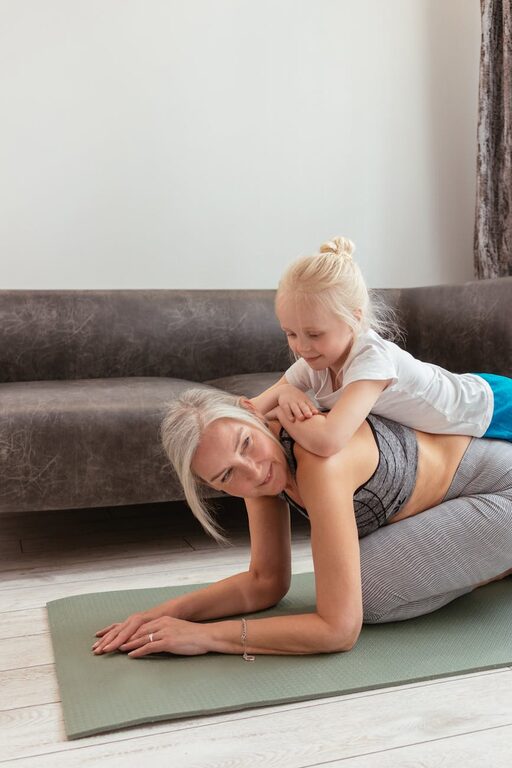
Stretching is a simple yet powerful practice that can improve your flexibility, increase blood flow, and help you feel more relaxed throughout the day. Whether you’re new to exercise or looking to add a gentle routine to your daily life, stretching at home is an accessible and rewarding habit. This beginner’s guide walks you through the basics, benefits, and easy stretches you can do anytime, anywhere.
Why Stretching Matters
Stretching isn’t just for athletes or yoga enthusiasts. It is beneficial for everyone, offering:
– Improved flexibility and range of motion
– Reduced muscle tension and stiffness
– Enhanced posture and balance
– Better circulation
– Stress relief and relaxation
By consistently incorporating stretches into your routine, you can support your body in moving more comfortably and prevent injuries from everyday activities.
Preparing to Stretch at Home
Before you begin stretching, it’s important to create a safe and comfortable environment:
– Choose a quiet, uncluttered space: Find a spot where you have enough room to move freely without distractions.
– Wear comfortable clothing: Loose or stretchy clothes that don’t restrict movement are ideal.
– Use a yoga mat or soft surface: This provides cushioning and support, especially for floor stretches.
– Warm up briefly: A few minutes of light activity (like walking or marching in place) can warm your muscles and help prevent injury.
Basic Stretching Tips for Beginners
To get the most from your stretching routine, keep these tips in mind:
– Breathe deeply: Inhale and exhale slowly during each stretch to promote relaxation.
– Hold each stretch 15-30 seconds: Avoid bouncing or sudden movements; steady holds are more effective.
– Stretch both sides: Balance your routine by stretching each side of your body equally.
– Listen to your body: Stretch to a point of gentle tension, not pain. Stop if you feel sharp discomfort.
– Be consistent: Aim for stretching 3-5 times per week for noticeable benefits.
Easy Stretches to Try at Home
Below are simple stretches that target major muscle groups and can be done without any special equipment.
Neck Stretch
– Sit or stand with a straight spine.
– Slowly tilt your head to the right, bringing your ear toward your shoulder.
– Hold for 20 seconds, feeling a stretch along the left side of your neck.
– Repeat on the other side.
Shoulder Rolls
– Stand or sit comfortably with arms relaxed at your sides.
– Slowly roll your shoulders forward in a circular motion 10 times.
– Reverse direction and roll backward 10 times.
– This helps relieve shoulder tension and improve mobility.
Chest Opener
– Stand tall and clasp your hands behind your back.
– Gently straighten your arms and lift your chest.
– Hold for 20 seconds, feeling a stretch across your chest and front shoulders.
Cat-Cow Stretch (Spine Mobility)
– Begin on all fours with wrists under shoulders and knees under hips.
– Inhale as you arch your back, lifting your tailbone and head (Cow pose).
– Exhale as you round your spine toward the ceiling, tucking your chin (Cat pose).
– Repeat slowly 5-8 times to warm and stretch your spine.
Seated Forward Bend
– Sit on the floor with your legs extended straight in front of you.
– Inhale, reaching your arms up.
– Exhale and gently fold forward from your hips, reaching toward your feet.
– Hold for 20-30 seconds, keeping your back as straight as possible.
Hip Flexor Stretch
– Kneel on your right knee with your left foot forward, knee bent at 90 degrees.
– Shift your weight forward slightly, stretching your right hip flexor.
– Hold for 20-30 seconds, then switch sides.
Calf Stretch
– Stand facing a wall with your hands placed at shoulder height.
– Step one foot back, keeping it flat on the floor and knee straight.
– Lean forward slightly, bending the front knee until you feel a stretch in the calf of the back leg.
– Hold for 20 seconds, then switch sides.
Creating Your Own Stretching Routine
Once you’re familiar with basic stretches, you can tailor your routine to fit your needs:
- **Warm up** (5 minutes): Light cardio such as walking or gentle jogging in place.
- **Full-body stretch session** (10-15 minutes): Include stretches that cover neck, shoulders, spine, hips, and legs.
- **Cool down** (optional): End with deep breathing exercises or gentle yoga poses to promote relaxation.
Try to set aside a regular time — morning to wake up, before bed to relax, or midday to break up your day. Consistency helps your body adapt and improves overall flexibility.
Tips to Stay Motivated
– Set small, achievable goals such as stretching for 10 minutes daily.
– Play calming music or use a guided stretch video.
– Invite a family member or friend to stretch with you.
– Keep track of progress by noting improvements in flexibility or how you feel.
When to Avoid Stretching
While stretching is usually safe, it’s best to avoid it if you have:
– An acute injury (such as a sprain or strain)
– Severe joint pain
– Certain medical conditions without consulting a healthcare professional
If unsure, seeking advice from a fitness expert or physical therapist is recommended.
Final Thoughts
Stretching at home is a simple and enjoyable way to enhance your physical health and mental well-being. With these beginner-friendly tips and stretches, you can build a routine that fits your lifestyle—promoting flexibility, reducing tension, and boosting relaxation. Remember to move mindfully, listen to your body, and have fun exploring new ways to care for yourself.
Give it a try today, and enjoy the positive changes stretching can bring!
